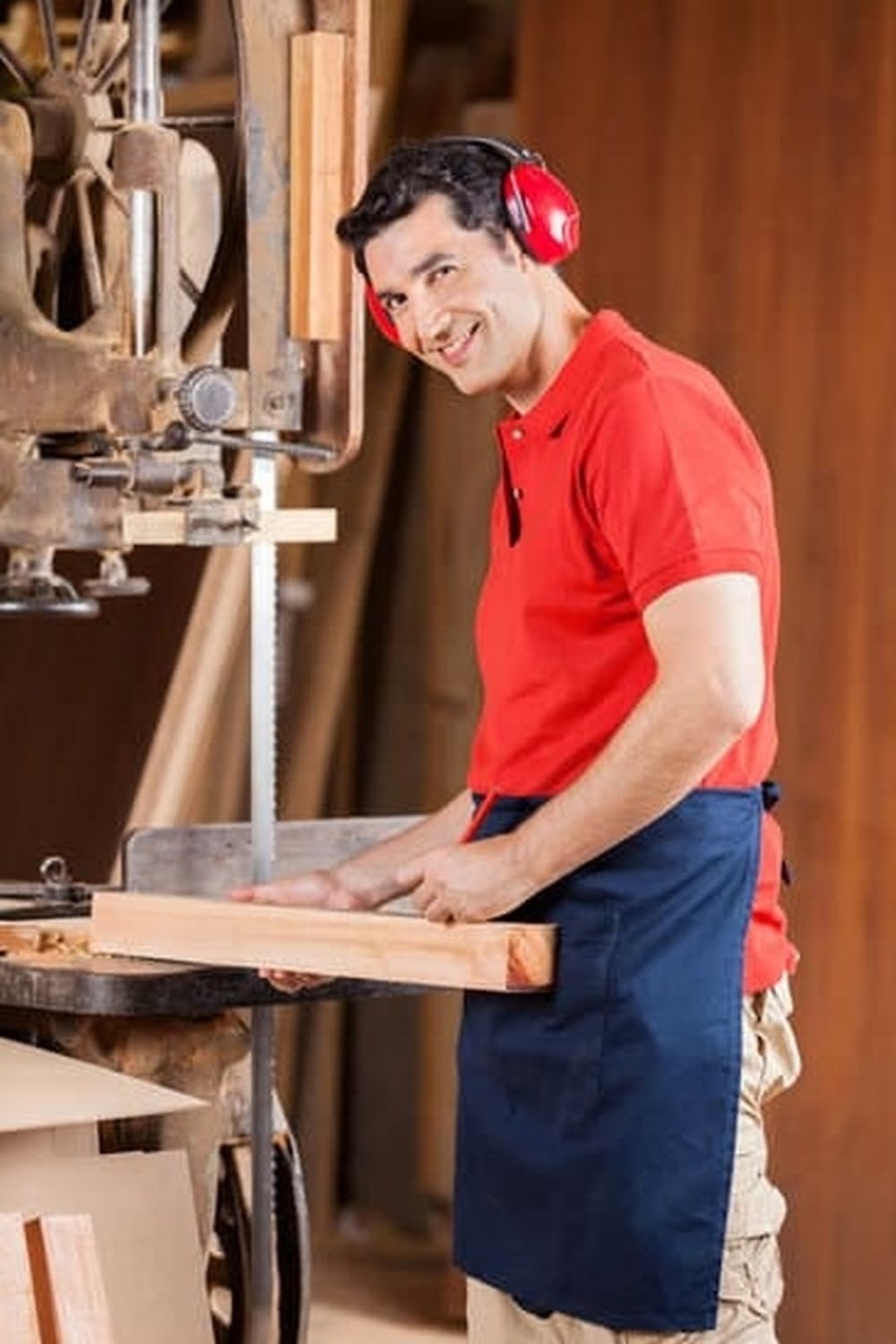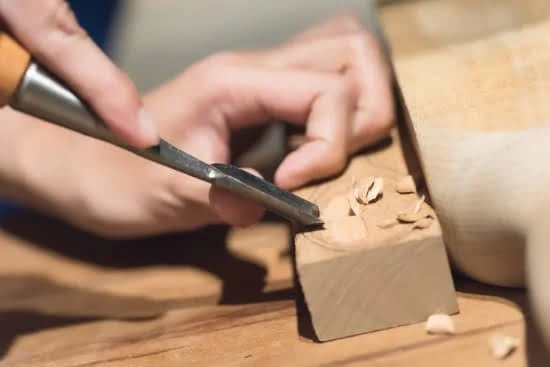Hardwood lumber plays a crucial role in woodworking, providing strength, durability, and beauty to various projects. Whether you are a seasoned woodworker or just starting out, finding affordable materials can be challenging. This article will guide you on how to find free hardwood lumber for your woodworking projects.
With the rising costs of materials, discovering ways to obtain quality hardwood lumber without breaking the bank is essential for any woodworker. Understanding the different types of hardwood lumber available and their unique characteristics can help you choose the right material for your project. From oak to maple to cherry, each type offers its own distinct grain patterns and color variations.
One of the most cost-effective ways to acquire free hardwood lumber is by checking local sawmills or logging companies for leftover scraps or cutoffs. Additionally, utilizing online resources such as community forums or social media groups dedicated to woodworking can connect you with individuals looking to get rid of excess lumber. By networking with other woodworkers and approaching woodworking businesses for scraps, you can access a treasure trove of free materials for your next project.
Understanding the Different Types of Hardwood Lumber
Types of Hardwood Lumber
When it comes to woodworking, knowing the different types of hardwood lumber is essential. Hardwood lumber comes from trees that lose their leaves seasonally, unlike softwood trees. Some common types include oak, maple, cherry, walnut, and ash. Each type of hardwood has its unique characteristics in terms of color, grain pattern, and hardness. Understanding these differences can help you choose the right wood for your woodworking projects.
Grades of Hardwood Lumber
Hardwood lumber is graded based on its quality and appearance. The two main grading systems used are the National Hardwood Lumber Association (NHLA) and the Appalachian Hardwood Manufacturers (AHMI). Grades range from clear (highest quality) to rustic (more knots and imperfections). Knowing the grades can help you select the right hardwood lumber for your specific project needs.
Sustainability of Hardwood Lumber
With growing concerns about deforestation and environmental impact, it’s important to consider the sustainability of hardwood lumber. Look for suppliers that source their wood responsibly through sustainable forestry practices or reclaimed wood options. By choosing sustainably sourced hardwood lumber, you can minimize your ecological footprint while still enjoying the beauty and durability of hardwood in your woodworking projects.
Ways to Find Free Hardwood Lumber
Local sawmills can be a hidden treasure trove for woodworkers looking to find free hardwood lumber for their projects. Many sawmills often have offcuts, scraps, or damaged pieces of hardwood that they are willing to give away or sell at a discounted rate. By establishing a good rapport with these sawmills, woodworkers can regularly acquire high-quality hardwood lumber for their woodworking needs without breaking the bank.
One effective way to approach local sawmills is by directly contacting them or visiting their facilities. By expressing genuine interest in the wood they have available and being open to receiving leftover pieces, woodworkers can build a mutually beneficial relationship with these establishments. Some sawmills may even set aside specific types of hardwood that are not suitable for sale but are perfect for small woodworking projects.
In addition to acquiring free hardwood lumber from local sawmills, it is essential to be mindful of the quality and condition of the wood obtained. Inspecting the pieces for any defects, such as knots, cracks, or warping, is crucial to ensure that the lumber is safe and suitable for use in woodworking projects. Properly storing and preparing the hardwood lumber before using it in a project will also help maintain its integrity and prevent any issues down the line.
| Benefits | Considerations |
|---|---|
| Access to high-quality hardwood | Inspecting for defects |
| Potential cost savings | Proper storage and preparation |
Ways to Find Free Hardwood Lumber
When it comes to finding free hardwood lumber for your woodworking projects, one of the most convenient ways is by utilizing online resources and community forums. The internet has opened up a world of opportunities for woodworkers looking to source materials without breaking the bank. Here are some tips on how you can leverage online platforms to get your hands on free hardwood lumber:
- Check out websites and apps: There are various websites and mobile apps dedicated to connecting individuals who have excess or unused hardwood lumber with those who are in need of it. Platforms like Freecycle, Craigslist, and Facebook Marketplace often have listings for free lumber that you can pick up locally.
- Join woodworking forums: Online woodworking forums are a treasure trove of information and resources for woodworkers. By joining these communities, you can connect with fellow enthusiasts who may be willing to give away or trade hardwood lumber. Be an active member, participate in discussions, and keep an eye out for any posts offering free wood.
- Utilize social media groups: Many social media platforms have groups or pages dedicated to woodworking and DIY projects. Joining these groups can provide you with access to a community of like-minded individuals who might have surplus hardwood lumber they are willing to part with for free.
By taking advantage of online resources and community forums, you can significantly expand your options when it comes to sourcing free hardwood lumber for your woodworking endeavors. Remember to exercise caution when arranging pickups or trades with strangers online, and always prioritize safety when collecting materials from unknown sources. With a bit of effort and persistence, you’ll be surprised at how many sources of free hardwood lumber are at your fingertips through the power of the internet.
Ways to Find Free Hardwood Lumber
Woodworking businesses are a treasure trove of free hardwood lumber scraps that can be utilized for various projects. These businesses often accumulate a significant amount of leftover wood from their projects, which they may be willing to give away for free or at a nominal cost. Approaching local woodworking businesses such as furniture makers, carpenters, or custom wood shops is a great way to find high-quality hardwood lumber without breaking the bank.
When approaching woodworking businesses for scraps, it is essential to establish a good relationship with them. Introduce yourself and express your interest in woodworking projects using reclaimed materials. By building rapport with these businesses, you are more likely to be offered free hardwood lumber scraps on a regular basis. Additionally, consider offering your assistance or services in exchange for the wood scraps, which can create a mutually beneficial arrangement.
Another effective way to find free hardwood lumber from woodworking businesses is by attending craft fairs, trade shows, or industry events where these businesses showcase their work. Many exhibitors often have excess materials that they are willing to part with at the end of the event. Networking with exhibitors and expressing your interest in repurposing their leftover wood can lead to valuable connections and sources of free hardwood lumber for your woodworking projects.
| Important Tips | Benefits |
|---|---|
| Establish rapport with woodworking businesses | High-quality hardwood lumber at no cost |
| Networking at craft fairs and industry events | Mutually beneficial arrangements |
Tips on Salvaging and Repurposing Hardwood Lumber
Salvaging and repurposing hardwood lumber can be a rewarding endeavor for woodworkers looking to create unique, sustainable projects without breaking the bank. Here are some tips on how to find free hardwood lumber for your woodworking by salvaging and repurposing:
- 1. Keep an eye out for discarded furniture or construction materials: Many times, old furniture or construction sites have pieces of hardwood lumber that can be salvaged and repurposed for new projects. Check dumpsters, curbside pickups, or even local classified ads for potential finds.
- 2. Visit recycling centers or salvage yards: These places often have a treasure trove of discarded materials, including hardwood lumber. Some centers might even offer free sections of leftover wood that can be used for various woodworking projects.
- 3. Attend estate sales or auctions: Estate sales or auctions are great places to find quality hardwood lumber at affordable prices, and sometimes you might even come across free scraps that others overlook. Keep an open mind and be ready to inspect different pieces for potential use in your woodworking endeavors.
Repurposing hardwood lumber not only helps in reducing waste but also adds a unique touch to your woodworking creations. By exploring these avenues for free materials, woodworkers can enhance their skills while being environmentally conscious.
Remember to always assess the quality of reclaimed wood before using it in your projects – look out for signs of rot, insect infestation, or other damage that could compromise the structural integrity of the wood. With proper care and attention to detail, salvaged hardwood lumber can breathe new life into your woodworking projects while staying within budget constraints.
Importance of Networking With Other Woodworkers for Free Lumber Sources
Woodworking is a rewarding and fulfilling hobby or profession that relies heavily on the use of quality materials, especially hardwood lumber. Hardwood lumber is known for its durability, strength, and aesthetic appeal, making it a popular choice among woodworkers for various projects. However, purchasing hardwood lumber can be quite costly, especially for those just starting in woodworking.
This is where the importance of networking with other woodworkers comes into play. By connecting with fellow wood enthusiasts, you can often find free sources of hardwood lumber for your projects.
Joining Woodworking Groups and Associations
One effective way to network with other woodworkers and find free hardwood lumber is by joining woodworking groups or associations in your local community. These groups typically consist of experienced woodworkers who may have excess lumber or scraps they are willing to give away. By actively participating in group activities and building relationships within these communities, you increase your chances of finding free hardwood lumber for your woodworking projects.
Attending Woodworking Workshops and Events
Another great way to network with other woodworkers and potentially score some free hardwood lumber is by attending woodworking workshops, events, or classes. These gatherings provide a valuable opportunity to meet like-minded individuals who share your passion for woodworking.
During these events, you can engage in conversations about your projects and inquire about any available hardwood lumber that others may be looking to get rid of. Networking at these events can lead to fruitful connections that can benefit both parties involved in terms of sharing resources and knowledge.
Utilizing Online Platforms
In this digital age, online platforms such as social media, woodworking forums, and classified ads websites are excellent tools for networking with other woodworkers and finding free hardwood lumber. Joining online woodworking communities allows you to connect with individuals across the globe who may have surplus hardwood lumber they are willing to part with at no cost.
By actively engaging in these online platforms and sharing your own expertise and resources, you can build a network of contacts that will help you access free hardwood lumber for your woodworking endeavors.
Safety Precautions and Considerations When Using Reclaimed Hardwood Lumber
When it comes to woodworking, using reclaimed hardwood lumber can be a cost-effective and environmentally friendly option. However, it is essential to prioritize safety when working with this type of material. Reclaimed hardwood lumber may have imperfections, hidden nails or screws, or even traces of chemicals from previous use that can pose potential hazards if not handled properly. Here are some important safety precautions and considerations to keep in mind when using reclaimed hardwood lumber for your woodworking projects.
First and foremost, always inspect the reclaimed hardwood lumber thoroughly before beginning any project. Look for any signs of damage, decay, or embedded metal that could damage tools or cause injury during the cutting or shaping process. It is crucial to remove any foreign objects from the wood carefully to prevent accidents while working with the material.
Another critical aspect to consider when using reclaimed hardwood lumber is ensuring proper ventilation in your workspace. Some reclaimed wood may have been treated with chemicals or paints that can release harmful fumes when cut or sanded. To avoid exposure to these toxins, make sure you are working in a well-ventilated area or wear appropriate respiratory protection such as a mask or respirator during woodworking tasks.
Additionally, using the right tools and equipment is vital for safely working with reclaimed hardwood lumber. Make sure your tools are sharp and in good condition to minimize kickback and splintering while cutting the wood.
It’s also recommended to wear appropriate personal protective equipment such as safety goggles, gloves, and ear protection to prevent injuries while handling reclaimed hardwood lumber for your woodworking projects. By following these safety precautions and considerations, you can enjoy the benefits of using free hardwood lumber while prioritizing your well-being and creating beautiful pieces of craftsmanship securely and responsibly.
Networking with other woodworkers who may have access to free hardwood lumber sources can also help expand your options for finding reclaimed materials for your projects. By collaborating with fellow woodworking enthusiasts, you can learn about new sources of free hardwood lumber like old barns being torn down, construction sites discarding unused materials, or homeowners looking to get rid of excess wood from renovation projects.
Building relationships within the woodworking community not only opens up more opportunities for obtaining free materials but also promotes a culture of sharing resources and knowledge among craftsmen – ultimately enriching the woodworking experience for everyone involved.
Conclusion
In conclusion, finding free hardwood lumber for your woodworking projects can be a game-changer in terms of cost savings and sustainability. By utilizing local sawmills, online resources, community forums, and reaching out to woodworking businesses for scraps, you can source high-quality materials without breaking the bank. This not only allows you to create beautiful pieces without the hefty price tag but also contributes to reducing waste and promoting eco-friendly practices.
Moreover, understanding the different types of hardwood lumber and learning how to salvage and repurpose reclaimed wood can add a unique touch to your projects. Networking with other woodworkers can also open up doors to new sources of free lumber and valuable insights into woodworking techniques. By building these connections within the woodworking community, you not only gain access to more materials but also grow as a craftsman through shared knowledge and experiences.
Incorporating safety precautions when working with reclaimed hardwood lumber is essential to ensure that your woodworking projects are not only visually appealing but also durable and safe for everyday use. Remember to inspect each piece carefully, remove any nails or metal fragments, and take the necessary measures to protect yourself from potential hazards. Ultimately, by taking advantage of free hardwood lumber resources and following proper safety protocols, you can enhance your woodworking skills while minimizing costs and environmental impact.
Frequently Asked Questions
Where Is the Best Place to Get Free Wood?
The best place to get free wood is often through sources like Craigslist, Freecycle, or local community groups. Many people offer leftover scraps, pallets, or construction materials for free if you are willing to pick them up.
How to Get Free Wood From Lowes?
Getting free wood from Lowe’s typically involves checking their cull lumber pile. This is where damaged or imperfect wood is placed at a discounted price or even offered for free. Asking store staff politely can sometimes lead to scoring some free wood.
What Is the Cheapest Hardwood Option?
When looking for the cheapest hardwood option, it’s best to consider soft hardwoods like poplar or alder. These types of wood are more affordable compared to popular hardwoods like oak or cherry, making them a budget-friendly choice for woodworking projects.

Hi everyone! I’m a woodworker and blogger, and this is my woodworking blog. In my blog, I share tips and tricks for woodworkers of all skill levels, as well as project ideas that you can try yourself.





